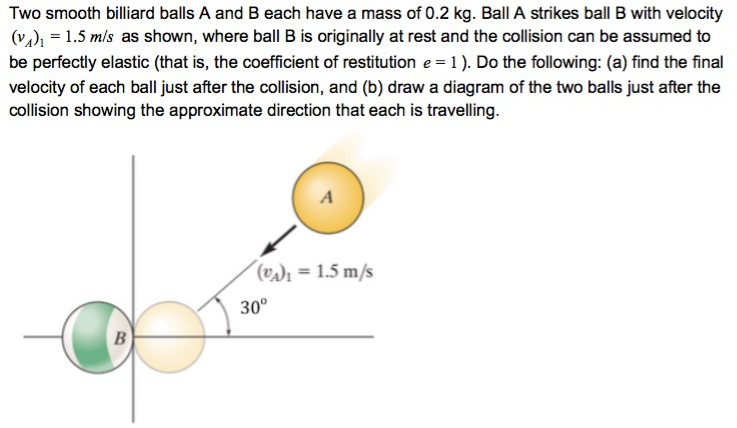Two smooth billiard balls A and B each have a mass of 0.2 kg. Ball A strikes ball B with velocity (vA)1 = 1.5 m/s as shown, where ball B is originally at rest and the collision can be assumed to be perfectly elastic (that is, the coefficient of restitution e = 1). Do the following: (a) find the final velocity of each ball just after the collision, and (b) draw a diagram of the two balls just after the collision showing the approximate direction that each is travelling.
